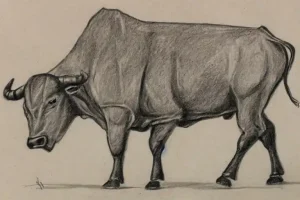In the first half of the 20th century, Pablo Picasso is arguably the most famous and influential artist. He explored several art styles and techniques in his lifestyle that depicted the very essence of his subjects, especially animals. How did he come up with the idea of choosing animals as his subjects? From what animals did Picasso take inspiration and draw?
Picasso drew and sketched a variety of animals: his friend’s pet dog, Lump, everyday animals that we normally see like cats, different types of birds, wild animals, and even exotic ones that are rarely seen in domestic households, such as bulls, penguins, and camels.
These artworks can be seen in homes all around the world. With the style and technique used in these animal-themed artworks, they have become Picasso’s most reproduced artworks.
Picasso varied the level of detail in his sketches throughout his career, beginning with simple pencil sketches of his favorite animals and progressing to sketches of mythical animals. Read on to learn more about his different animal line drawings, which are still awesome to look at today, and learn more about how they were created in the next parts below!
Minimalist Line Drawings
Table of Contents
Line drawings play an important role as they are used to sketch paintings before actually starting. In line with this, Picasso was able to practice and refine his ideas before committing them to canvas, which helped pave the way for his “Cubist Period.” Their simplicity of form strips away all distractions, leaving his natural ability at its most visible. [1]
Picasso is famous for his Cubist technique. Discover the revolutionary method in my post about the Picasso cubist painting Ma Jolie.
Line removes color, shade, and composition of the subject from the art. It leaves the subject just the way it is. In essence, a line depicts the shape and substance of an object, and a line drawing on paper gives the impression of three-dimensional space.
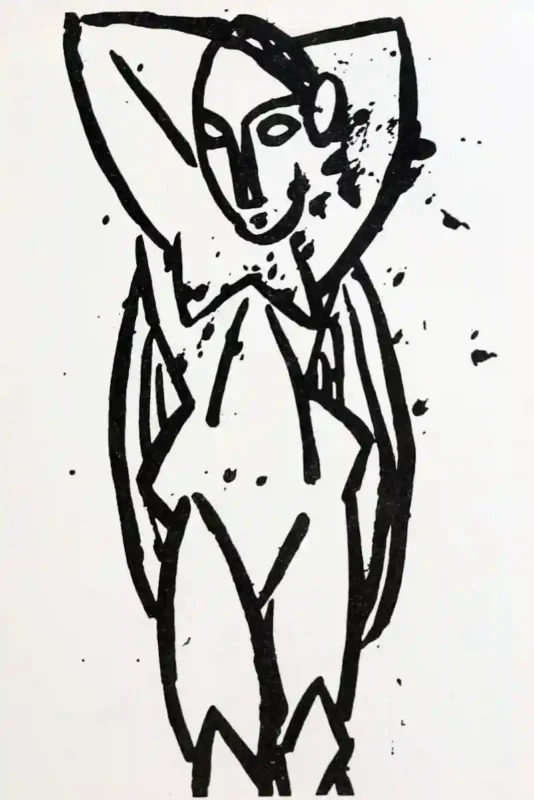
Primitivism and primitive art influenced artists of the time. In fact, Picasso’s line art was greatly influenced by the Primitive art movement of the early 20th century. Due to the vitality primitive pictures give out, they were very popular. They stand out because they are so simple, but they also show that the artist knows how to draw because of how well they use lines to show what the animal looks like.
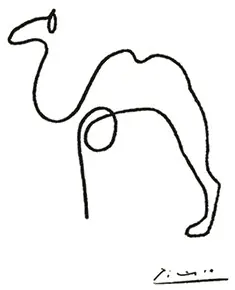
Picasso’s rivals like Matisse also made popular line drawings. Matisse spent a lot of time investigating the potential of lines in the painting. He, like Picasso, used the expressive power of the line gesture to paint highly private topics like naked people, the feminine form, and other themes like mythology. [2] Some of Matisse’s popular line-drawing subjects include:
- Dogs
- War and Peace
- Women
- Mythology
Picasso also drew a tribute to a classic literary character. Explore the idealism and themes of Don Quixote in my post about Picasso’s famous drawing.
Lithograph Bull (Study) Line Drawing
The “Bull” consists of eleven portraits of bulls. Picasso painted this collection in the Christmas season of 1945. The first lithograph in the set looks like it was made quickly with a brush and ink because it has a loose, unplanned look. There is some representation of shadows, and the details are fairly accurate. Around the middle of the series, the bull starts to look more and more like Picasso’s usual works, with abstract lines and stylized features. The bull is simply drawn in a single line in the final print. [3]
The group of eleven lithographs titled “Bull” shows how art can be more abstract and minimalist. In this set of drawings, all of which were taken from the same stone, Picasso carefully looks at the shape of a bull to figure out what it is at its most basic level. Picasso begins to eliminate and simplify parts of the structural line that have fulfilled their purpose when he sees the bull’s balance of form. [4] The remaining necessary components are then enclosed in a tight shape.
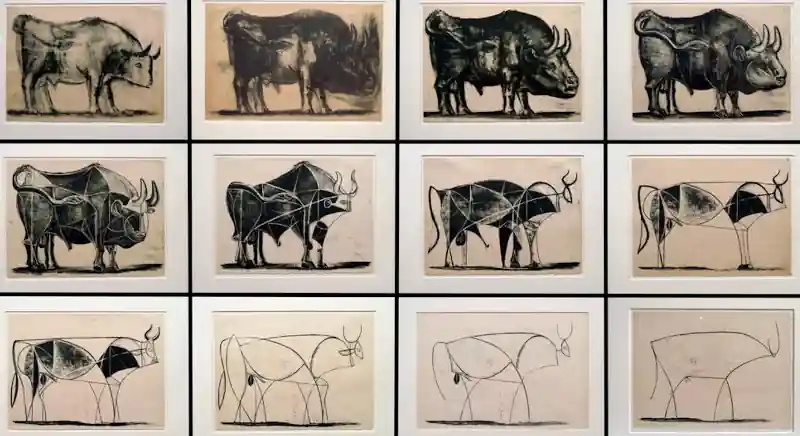
Created right after World War II, this collection eloquently illustrates the type of lithography experimentation that Picasso performed at the Mourlot print workshop in Paris. Between 1945 and 1969, Picasso created over four hundred lithographs at Mourlot.
Interpreters argue that the bull symbolizes Spain and its people. The bull is often seen as a symbol of manliness and strength, but it is also often seen as a victim, either because it was tamed and made less powerful by man’s greater intelligence or because it was sacrificed in a ritual. There are also other interpretations aside from this-such as the bull being a comment on fascism and brutality; the bull being a symbol of virility; or the bull being a reflection of Picasso’s self-image. [4]
Other Minimalist Line Drawings
Other minimalist line drawings that Picasso drew include his friend’s dog, Lump, who ate one of his paintings. Lump is David Douglas Duncan’s dachshund dog. The day they met, Lump was immortalized in a Picasso painting on a plate, but it was just the beginning. When Duncan published a collection of 89 images of Picasso and Lump in his book Lump: The Dog Who Ate a Picasso in 2006, along with a narrative of their tale, he perfectly captured the essence of the pair’s affection for one another.
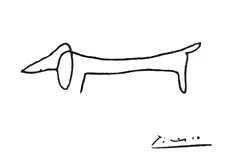
Aside from Lump the dog, Picasso also painted penguins, camels, an owl, a butterfly, a horse, and a pig. These pieces which primarily feature animals represent the artist’s lifelong passion for them. Due to the vitality these pictures give off, they are very popular. Picasso’s talent is shown by the fact that he can make these animals look almost real with just a few short, simple lines.
Picasso signed some of the drawings. Learn all about Picasso’s signature policy and the difficulty of authenticating some of the world’s most valuable paintings.
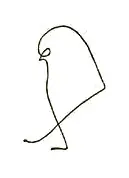
Picasso also depicted an abstract mouse, a sparrow, and a grasshopper in his art. Picasso’s transition to more abstract ways of representation was greatly influenced by the growth of Western Primitivism under the influence of African art.
Want to know the range and depth of the art periods in Picasso’s career? Take a journey through time in my post that explores the fascinating periods that shaped Picasso’s unique and innovative approach to art.
His art explored abstraction, but it did so in a way that always began with reality. Thus, Picasso’s artwork was never as abstract as the movement’s forerunners were. [5]
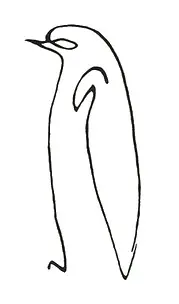
It is also worth mentioning that the most recognizable line drawings Picasso made are illustrations of a squirrel, rooster, flamingo, cat, and ostrich. Since many people today decorate their homes with just a few well-chosen items and a lot of empty space to let everything breathe, pencil sketches feel very modern and work well with that style of home.
This is particularly true of the drawing of the flamingo, which naturally lends itself to a single-line drawing, as it lends itself to a continuous line of chalk or pencil conveying shape, form, and qualities.
Another famous drawing Picasso made is the infamous portrait of the composer Igor Stravinsky. Step into the world of the Ballet Russes and the iconic theater plays Picasso helped design.
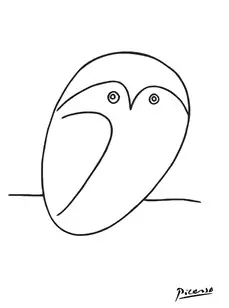
The most famous and iconic of all of Picasso’s line drawings is the “dove of peace,” which was a lithograph at first and later on transformed into a line drawing. It served as a symbol for the World Congress for General Disarmament and Peace, which took place in Moscow from July 9–14, 196.
Years later, Picasso honed the design into a graphic line painting that has since become a symbol of peace throughout the world recognized even today.
Want to know all about Picasso’s artwork of his feathered friends? Discover the details in my deep dive on Picasso’s bird drawings and paintings.
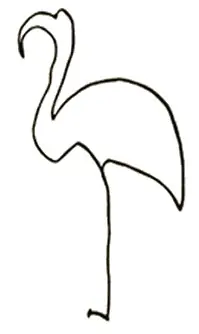
Mythical Animal Drawings
Picasso was enamored with the terrifying half-bull, half-man Minotaur from Greek mythology and made artworks inspired by this such as the “Minotaur Drinker and Women.” It illustrates a man offering a glass to his partner minotaur with three stunning women adoring them. Although the overall scene appears to be one of joy and celebration, every figure appears to have been lost in the gloomy ocean of ideas. [6]
“Minotaur Caressing the Hand of a Sleeping Girl with his Face” is another mythical creature-inspired drypoint artwork from the Vollard Suite (Suite Vollard) 1933, published in 1939. [7] Picasso made the Minotaur, a hybrid of a man and a bull, as his alter ego in the 1930s. During this time, the women in his life often gave him ideas for female figures. Picasso worked at night and had many opportunities to watch his lover sleep, which may account for the theme’s persistence.
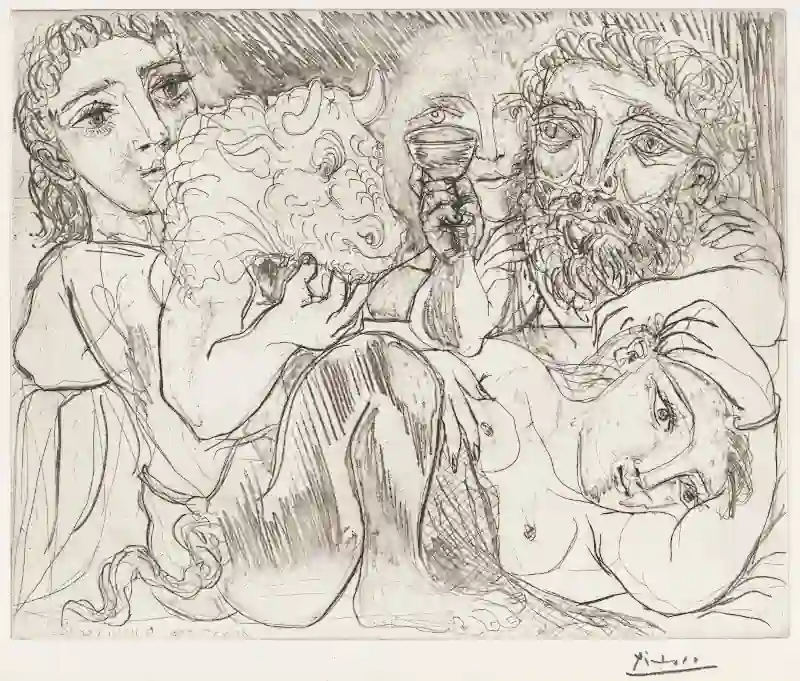
Next, “Minotaur Attacking an Amazon” which was created in 1933 is another artwork depicting a woman and the mythological minotaur. These figures are used by Picasso to symbolize the battle of the sexes, one of the major subjects he returned to often during his life, sometimes through sketches that show the minotaur or the bull raping the amazon which represents a woman.
On the other hand, “Blind Minotaur is Guided by Girl Through the Night,” which was completed in 1934, used a copper plate etching technique. The young girl is a representation of Marie-Thérèse Walter, Picasso’s then-mistress. Picasso applied aquatint all over the plate to create a deep black tone, which he later burnished and scraped to achieve the white highlights that give the figures their definition. [8]
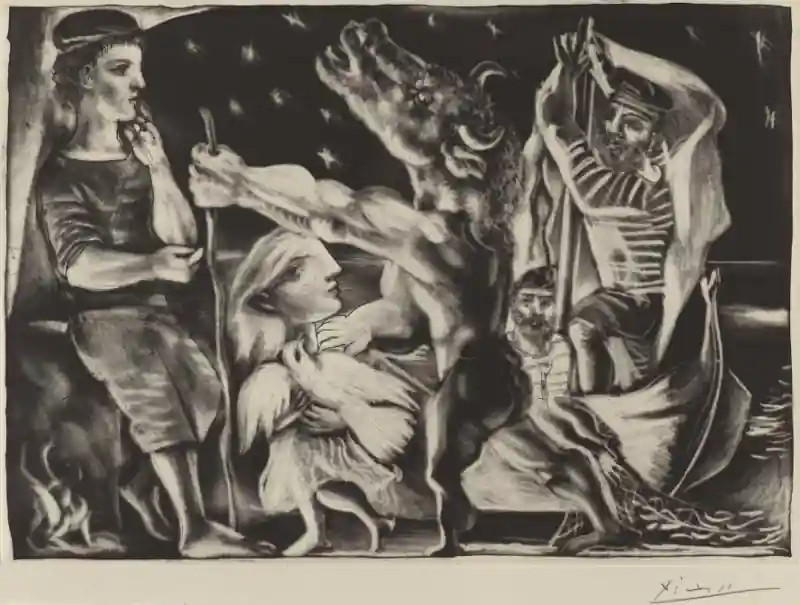
After experimenting with Neoclassicism, Picasso created “Bacchic Scene with Minotaur” in 1933. He didn’t use strange combinations to show how he felt about sex, desire, and women. Instead, he used sensual qualities and related etchings. The face of the nymph in the front of the Bacchic Scene with the Minotaur is oddly elongated, and in front of her, a hand waves from an unattached arm. The bodies on the right of the drawing are warped and twisted into bizarre attitudes to match the horrible vision.
Lastly, “Abduction (Nessus and Deianeira)” is one of Picasso’s early mythological artworks dated in 1920 under the neoclassicist period. Nessus, a centaur who was half horse and half man, pretended to be the Euenos River ferryman. Deianeira is Hercules’ wife. She needed to cross the river, so she mounted Nessus’ back to start her journey. While doing so, he made the decision to attempt to abduct and rape her, as was depicted in Picasso’s creation.
Frequently Asked Questions (FAQs)
The value of a Pablo Picasso painting can reach hundreds of millions of dollars for large pieces. This reflects his standing among the major artists of the 20th century. Several artworks have fetched hundreds of millions of dollars at auction. His painting titled “Nude, Green Leaves, and Bust” became the most expensive Picasso painting ever sold in the year 2010 which was sold for a record-breaking $106,482,500.
The most intricate pieces were frequently finished as etchings, of which the Museum of Modern Art in New York today owns a sizable collection. One of the broadest and most thorough perspectives on modern art may be found in The Museum of Modern Art’s large and diverse collection such as Picasso’s line drawings.
References
- “Set of 6 Picasso Line Drawings.” BADA, https://www.bada.org/object/set-6-picasso-line-drawings.
- Corso, Meghan. “Line Art – Follow Where It Leads.” Artland Magazine, 15 Sept. 2022, https://magazine.artland.com/line-art-follow-where-it-leads/.
- Scott, Dan, et al. “The Bull by Pablo Picasso.” Draw Paint Academy, 28 Oct. 2022, https://drawpaintacademy.com/the-bull/.
- Animals in Art – Pablo Picasso, https://www.artyfactory.com/art_appreciation/animals_in_art/pablo_picasso.htm.
- “IdeelArt: The Online Gallerist.” IdeelArt.com, https://www.ideelart.com/magazine/picasso-and-abstraction-by-ideelart.
- “Minotaur Drinker and Women.” Minotaur Drinker and Women by Pablo Picasso, https://www.pablopicasso.net/minotaur-drinker-and-women/.
- “Pablo Picasso. Minotaur Caressing the Hand of a Sleeping Girl with His Face (Minotaure Caressant Du Mufle La Main D’une Dormeuse), State II, from the Vollard Suite (Suite Vollard). 1933, Published 1939: Moma.” The Museum of Modern Art, https://www.moma.org/collection/works/64930.
- “Blind Minotaur Led by a Girl through the Night.” Philadelphia Museum of Art, https://philamuseum.org/collection/object/59501.
